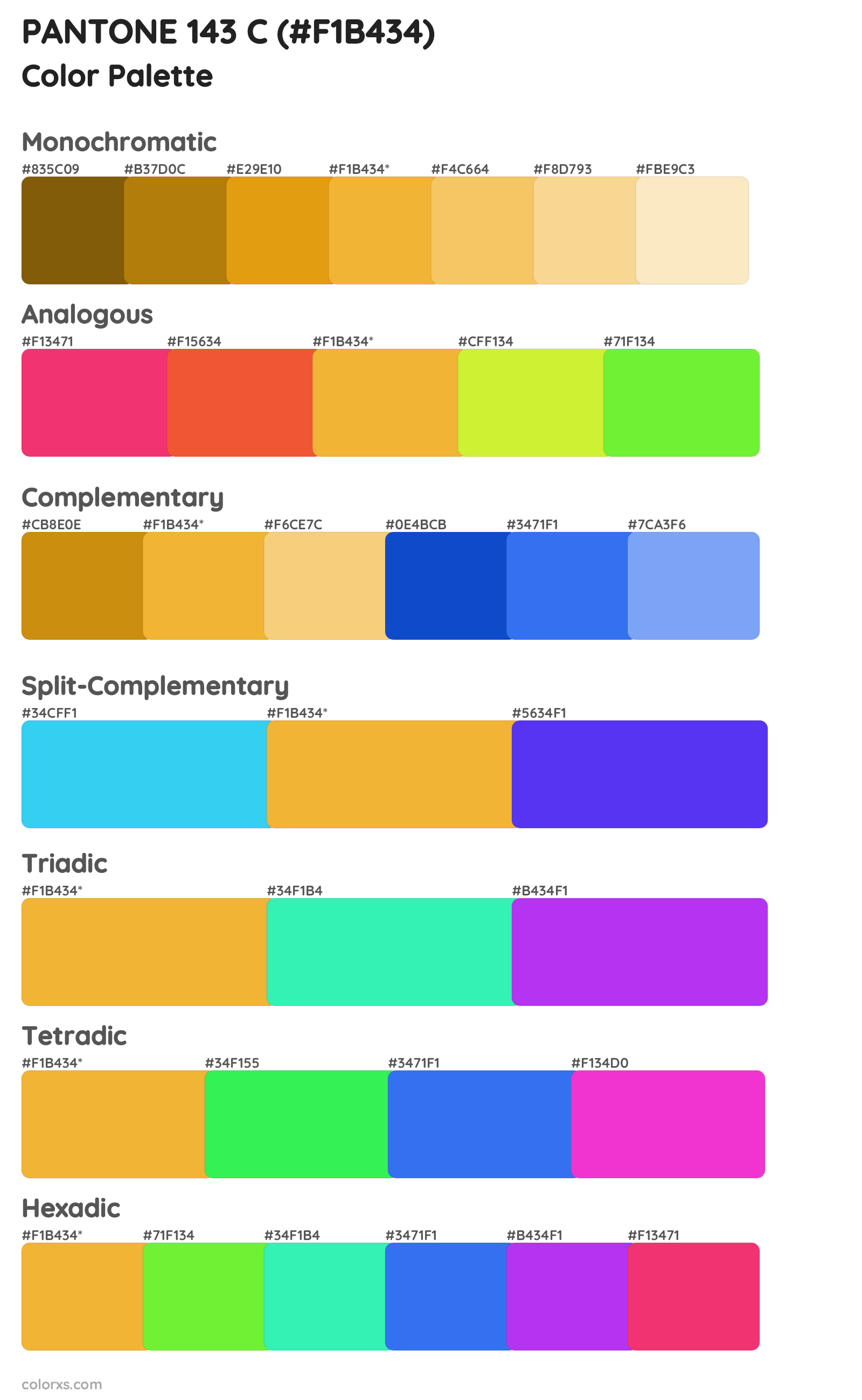PANTONE 143 C color palettes
PANTONE 143 C color palettes. Find what colors go with PANTONE 143 C color palettes. Explore monochromatic, analogous, complementary schemes. Inspiring color palette and combination for your next design.
PANTONE 143 C color palettes. Find what colors go with PANTONE 143 C color palettes. Explore monochromatic, analogous, complementary schemes. Inspiring color palette and combination for your next design.
Here are the few coordinating colors that go with PANTONE 143 C Pantone PMS.
Click on the hex color code or color name below to find more similar colors and matching paints from brands like Behr, Sherwin Williams, PPG Paints, Benjamin Moore, Valspar, Dunn-Edwards, etc...
According to monochromatic scheme, color that go with Pantone PMS PANTONE 143 C
According to complementary scheme, color that go with Pantone PMS PANTONE 143 C
| Color Name: | PANTONE 143 C |
| Hex Color Code: | #F1B434 |
| RGB Color Code: | RGB(241, 180, 52) |

Right click and use "Save image as" option to download "PANTONE 143 C color scheme palette".
Monochromatic Color Palette
Monochromatic colors belong to the same hue angle but different tints and shades. Monochromatic color palette can be generated by keeping the exact hue of the base color and then changing the saturation and lightness.
Analogous Color Palette
Analogous colors are a group of colors adjacent to each other on a color wheel. Group of these adjacent colors forms Analogous color scheme Palette. Analogous Palette can be generated by increasing or decreasing the hue value by 30 points.
Triadic and Triadic Color Scheme Palette
Here is the Triadic and Tetradic Color Scheme of PANTONE 143 C. The triadic color palette has three colors separated by 120° in the RGB color wheel and tetradic colour scheme composed of two sets of complementary colors in a rectangular shape on the color wheel.
Hexadic Color Palette
Hexadic color scheme palette is derived from drawing a hexagon on a color wheel. The palette contains three pairs of complementary colors, each colors are separated by a 120-degree hue angle.
Complementary Color Palette
Complementary color combination is composed using two colors opposite each other on the color wheel. Then the color palette is be generated by changing the lightness/brightness of these two colors.
Split-Complementary Color Palette
Split-Complementary color combination contains three colors, a base color and secondary colors of complementary color.